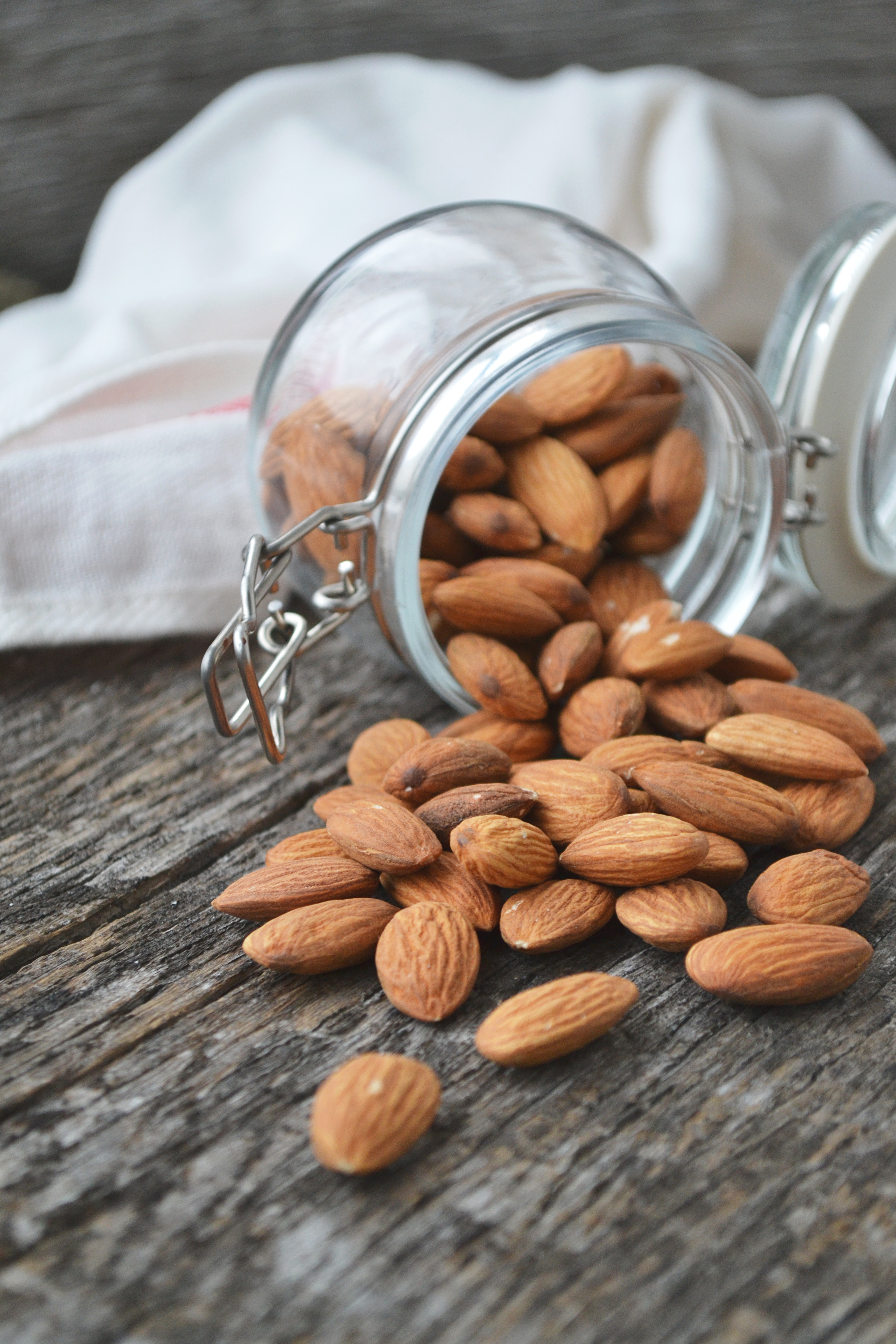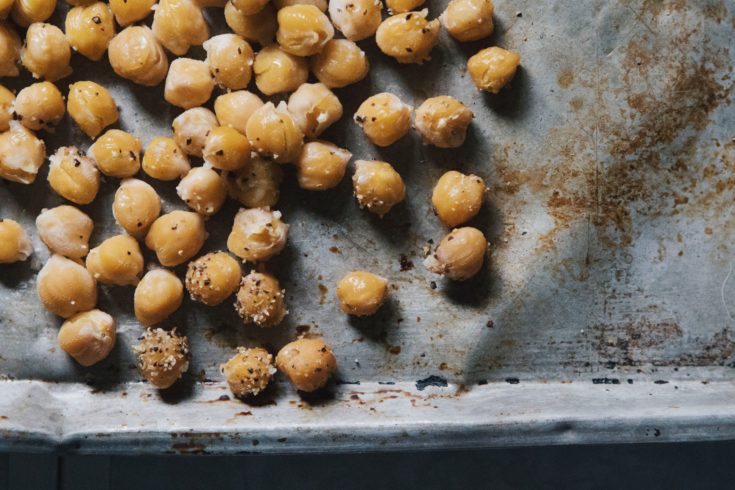
A few weeks ago I made a comment about how I feed my family on Instagram in which I mentioned that we often won’t have meat all day until dinner. Something along the lines of how we like to be largely plant-based but still eat meat most days of the week, typically for dinner. Much to my surprise, I got several messages asking me how I ensure that my children have enough protein if they don’t eat meat. At first, I was going to dismiss this question as a one-off, but when I got others asking the same question I figured it might warrant a larger discussion about how much protein children actually need and about the many amazing non-meat sources of protein.
Let’s get into it.

Kids don’t need that much protein
First off, I want to acknowledge that protein is obviously important for children, as it is the building block of muscle; but the fact of the matter is, you’re probably getting enough without even thinking about. In fact, most children are probably consuming too much protein. Excess protein doesn’t make children any stronger, it is broken down by the body and stored as fat. So, while active children don’t have a lot to worry about, sedentary children may be at risk of weight gain if they consistently eat too much protein.
For children ages 4-8yrs the recommendation is 5 servings (or approx 20 grams) of protein a day. This means if your child eats two eggs, a tablespoon of peanut butter, and a handful or two of nuts, which is approximately 28 grams of protein, they’re golden. If you really want to get into the nitty-gritty, you can calculate the protein needs of your individual child/children. I did.
According to the American Academy of Pediatrics spokesperson (Dr. Muth, Pick eater Project), children only need about .4 (yes, point 4) grams of protein per 1 lb of body weight. So my 8.5 yr old, who is approximately 61lbs, only needs about 25 grams of protein a day; my 4.5 yr old, who is approximately 41lbs, only needs about 16 grams of protein a day; and my toddler needs less than 10 grams of protein a day. You can see just from the non-meat food example above, it’s pretty easy to hit the protein requirements without even having dinner; which, as I mentioned, typically contains a serving of meat.
Limiting meat intake
Now don’t get me wrong, my family is absolutely made up of meat eaters. We enjoy a good steak and eat far more chicken then I care to think about, but we still choose to eat a plant-rich diet, or more specifically limit our meat intake. Here are a few reasons we like to limit our meats (and increase our veggies):
- To make room in tiny bellies for more fruits + veggies
- Children’s bellys are tiny, meat fills them up fast.
- Reducing carbon footprint
- According to one resource, a meat lover has the highest carbon footprint at 3.3 tons of greenhouse gas emissions. A vegan diet has the lowest carbon footprint at just 1.5 tons CO2e (Carbon Dioxide Equivalent). A vegetarian falls somewhere in between. We’re just doing our (small) part.
- Reduce cost
- We choose to use only the best quality meats (organic, free-range, grass-fed + grass finished, etc) which can be hella expensive.
Anyway, I figured it would be easiest to just share some of our favorite non-meat sources of protein. These are loved by the children and adults alike in our household.
9 non-meat sources of protein
Oats
We eat oats 3-4 times a week. It’s just an easy, protein-packed, way to fill the kids’ tummies before school. In addition to being high in vitamins, minerals, and a good source of fiber; they are also endlessly customizable. We use them for oatmeal, cookies, and granola (loose + granola bars).
- 1 cup cooked= 8 grams protein
- Fave way to eat:
- Oatmeal – Warm out of the crockpot, like this Apple Pie Oatmeal
- Overnight Oats – soak oats + milk of choice, shake, and add vanilla + toppings.
- For lazy days we love these easy Chewy Oat Bar Mixes by Foodstirs.
Quinoa
A few years ago quinoa became all the rage, and it’s not going anywhere. Quinoa is a versatile complete protein. It’s also a great source of potassium, magnesium, Iron, and Vitamin B6 and fiber. My husband hates any recipe in which you are trying to pretend that quinoa isn’t quinoa, but if you just let it shine through in its own right I’m sure you’ll fall in love.
- 1 cup cooked= 8 grams protein
- Fave way to eat:
- Roasted Broccoli + Chickpea Quinoa bowl: literally roast the veg & toss w/quinoa. Easy!
- This Carrot Cake + Quinoa Breakfast Cookie Recipe
Chia Seeds
Chia seeds are one the highest plant source of omega-3 fatty acids; reason enough to incorporate them into your diet. They are also high in fiber, iron, calcium, zinc, and antioxidants. Though a little low in lysine, Chia seeds are still a complete protein and are great for great for nail, skin, and bone health.
- 2 Tablespoons = 4 grams protein
- Fave way to eat:
- Easy Homemade Chia Seed Pudding — Recipe Here
- Quick Chia Seed Jam — Recipe Here
Hemp Hearts
These little nutty guys are a complete protein and a good source of GLA (Gamma-linolenic acid, aka Omega 6 fatty acid).
- 3 Tablespoons = 10 grams protein
- Fave way to eat:
- Sprinkled over yogurt, oatmeal, smoothies, or a salad
Chickpeas
- 1 cup cooked= 12 grams protein
- Fave way to eat:
- Hummus, obviously. — I’ve been trying this Sun-Dried Tomato Hummus
- Roasted as a snack — the kiddos love these Roasted Honey Cinnamon Chickpeas
- Tossed on any grain bowl
Almonds + Peanut Butter
You knew nuts were going to be on this list, and honestly, if you don’t have a nut allergy it’s the easiest way to get a plant-based protein into your kids. Get on it. Our faves are almonds, pecans, and hazelnuts, but PB+J sandwiches have a special place in my 4yr olds heart.
- 1oz almonds= 6 grams protein + 2 tablespoons peanut butter= 7 grams protein
- Fave way to eat:
- by the handful
- Almond Milk — 3 Nut Milk Recipes Here
- PB+J or AB+J sandwiches, because… kids.
Chocolate Hazelnut Butter
True life my kids have never had Nutella. Neither have I. In fact, I don’t eat chocolate at all so it’s a real labor of love to incorporate this into my children’s diet. I actually went seeking it out as a way to get more protein into my persnickety 4-year-old. I hit the jackpot with this one.
- 1 cup cooked= 12 grams protein,
- Fave way to eat:
- This organic Choc + Hazelnut spread option, by the spoonful. Seriously, my kids eat this with apples & bananas like its going out of style.
Spirulina
Spirulina is like 65-70% protein by weight, talk about a heavy hitter. It contains 22 amino acids, and rich in beta-carotene, calcium, and iron. I realize this is not everyone’s favorite flavor (it’s very “plant-y” tasting), but mixed in with a fruit-filled smoothie my kids hardly even notice.
- 1/2 Tablespoon = 2 grams protein
- Fave way to eat:
- Mixed into smoothies
Bonus: Eggs
This is one that firmly sits on the fence when it comes to meat vs not-meat debate. Nevertheless, any way you categorize them, eggs are a staple in our house. There will always be boiled eggs at the ready, and a single egg pan in the cupboard.
- 1 egg = 6 grams protein
- Fave way to eat:
- Boiled, Scrambled, Fried, Poached, you name it.
- Mini muffin tin Quiche — toss ingredients in a pyrex, scramble & pour into muffin tins
Additional Options
We don’t eat typically eat these, but here are a few other protein-packed plants:
- Seitan – 25 grams of protein per 3.5 ounces
- Tofu – 8 grams of protein per 100 gram (block)
- Soy milk – 7 grams of protein per 1 cup
Do you practice a plant-packed (ie- not explicitly vegetarian/vegan) diet? What are your favorite sources of non-meat or plant protein?
Xo, Kimberly Fe'Lix
